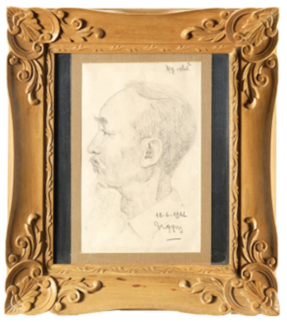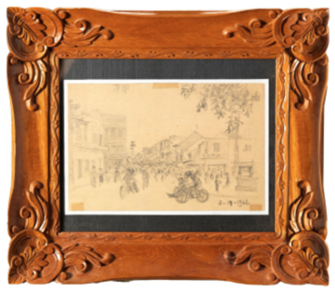The Adjug’Art Brest auction held in Paris on June 12th concluded beyond expectations, with a total of 568 lots including antiques, sculptures, furniture, and artworks. Notably, two paintings by artist Trần Quang Trân, “Bức họa Vy Cho” and “Hồ Hoàn Kiếm,” were successfully auctioned off at impressive prices.
Artist Trần Quang Trân is credited with inventing the lacquer painting technique, which involved adding gold powder between layers of lacquer. This technique made lacquer paintings shimmer and change in light and shade depending on the viewing angle, and it was later widely adopted by famous Vietnamese artists such as Phạm Hậu (Phạm Hầu), Trần Văn Cẩn, Nguyễn Khang, and Nguyễn Gia Trí. He continued to Japan around 1930 to further refine his techniques.
In 1932, Trần Quang Trân graduated from the Indochina College of Fine Arts and subsequently opened a studio at 87 Charron Street, Hanoi. Throughout the 1930s, he painted lacquer panels and boxes and many portraits of notable Vietnamese figures, leaving behind a significant artistic legacy.
In the mid-1930s, the artist chose to change his artist name and signature, signing as Ngym or Nghi Am from that point on.

NGYM (Trân Quang Trân) (1900-1969): “Bức họa Vy Cho,” a pencil drawing, annotated “vy-chu” at the top right, signed “Ngym” and dated “18-6-1961” at the bottom right – 20 x 12 cm.

NGYM (Trân Quang Trân) (1900-1969): Near the small lake (Hồ Hoàn Kiếm), Hanoi, a pencil drawing dated 3-11-1961 at the bottom right corner (with old glue marks on the edge) – 13 x 20 cm. Featured in the blog of Jean-François HUBERT, an art expert on Vietnam.
Trần Quang Trân’s works often depict quiet streets, temples, old buildings, or serene lakes, immersing viewers in a deep sense of tranquility and peace. His paintings are a unique blend of Eastern and Western traditions, rarely found elsewhere.
Despite his passion for studying art, he developed an affinity for teaching. In the early 1940s, he began his teaching career in private schools such as Thăng Long and Gia Long, and from 1949 at the Vietnam University of Fine Arts. Living in North Vietnam during the war, he worked from 1958 to 1962 for the Vietnam Film Studio (an animation studio) and organized many conferences at a Vietnamese film school.
Trần Quang Trân continued to contribute to his country’s art and nurture new artistic talents until the end of his life. He passed away in 1969, closing a glorious artistic career.
Khánh Linh






